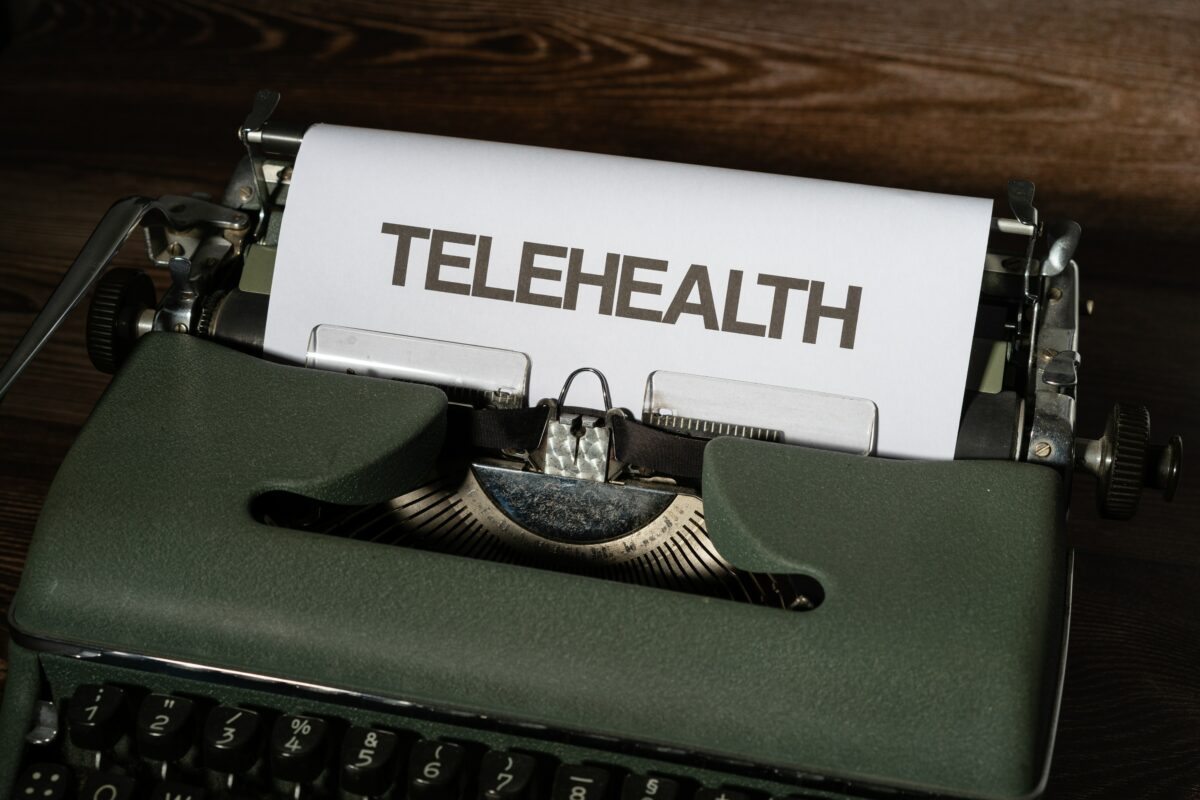The landscape of mental health support has undergone significant transformation over the years. Traditional in-person therapy, a longstanding pillar of psychological care, has witnessed a notable evolution with the advent of teletherapy. This digital medium has emerged as a response to the contemporary challenges posed by our fast-paced world, offering new avenues for delivering psychological assistance.
Recent statistics highlight the increasing preference for teletherapy, with its usage surging over the past decade, surpassing traditional in-person sessions. In 2020, Doctor On Demand, a telehealth provider, reported a 50% surge in new teletherapy patients within six weeks—a demand surpassing the peak of COVID-19-related anxiety in March and April.
Understanding Teletherapy: Mechanics and Evolution
Definition and Scope:
Teletherapy, also called online therapy, virtual therapy, or e-therapy, encompasses a range of therapeutic interventions delivered through digital communication channels. These channels primarily include video, audio, and text-based interactions, bridging the geographical gap between therapists and clients.
In teletherapy, therapists and clients engage in therapeutic conversations and interventions via secure platforms and applications, eliminating the need for physical presence in a traditional therapy setting. This medium allows individuals to access mental health support from the comfort of their environments, addressing concerns such as accessibility, privacy, and convenience.
Modes of Teletherapy
Video-Based Teletherapy:
Video-based teletherapy involves real-time visual interactions between therapists and clients through video conferencing. This modality replicates face-to-face sessions, enabling therapists to read nonverbal cues and expressions. Pros include a closer semblance to traditional therapy and the ability to establish rapport, but potential drawbacks involve technical glitches, privacy concerns, and the requirement for a stable internet connection.
Phone-Based Teletherapy:
Phone-based teletherapy relies on audio conversations conducted over the phone. This mode offers accessibility and convenience, requiring only a working phone line. Clients might feel more comfortable sharing sensitive topics verbally, but limitations include the absence of visual cues and potential communication misinterpretations.
Text-Based Teletherapy:
Text-based teletherapy occurs through written exchanges, often using messaging platforms or email. This mode allows clients to articulate thoughts more thoughtfully and offers flexibility in scheduling. However, it lacks real-time interaction and nonverbal cues and may hinder the establishment of immediate rapport.
Benefits of Teletherapy: Expanding Horizons
The benefits of teletherapy contribute to a transformative shift in mental health care, offering flexibility, accessibility, and customization that traditional in-person therapy might struggle to achieve. As technology continues to evolve, the following advantages will further shape the landscape of mental health support and widen its reach.
Enhanced Accessibility and Convenience:
- Transcending Geographical Barriers: Teletherapy eliminates the need for clients to be near their therapists. Individuals residing in remote or underserved areas gain access to mental health support that may have been previously inaccessible due to geographical constraints. This is particularly significant for those in rural regions or countries lacking mental health infrastructure.
- Flexibility of Scheduling: Teletherapy accommodates various time zones and busy lifestyles. Clients and therapists can schedule sessions at times that suit both parties, promoting continuity of care. This flexibility is valuable for professionals, caregivers, or individuals with irregular schedules.
Anonymity and Stigma Reduction:
- Open Discussion of Sensitive Topics: Virtual sessions foster a sense of anonymity, making it easier for clients to discuss sensitive or embarrassing topics. This reduced fear of judgment can lead to more honest and open conversations, enhancing the therapeutic process and outcomes.
- Engagement for Marginalized Communities: Teletherapy can reduce the stigma of seeking mental health care within specific cultural or conservative contexts. Marginalized communities, where mental health issues might carry a solid social stigma, find a safe space to access support without the fear of being recognized or judged within their communities.
Broadening Therapist Selection and Expertise:
- Global Pool of Therapists: Teletherapy transcends geographical boundaries, allowing clients to choose from a diverse global pool of therapists. This widens the options available for individuals seeking specific therapeutic approaches, cultural understandings, or languages that may not be prevalent in their local area.
- Ease of Finding Specialized Help: Virtual platforms facilitate finding therapists with specialized expertise. Clients can easily search for professionals specializing in their concerns, such as trauma, LGBTQ+ issues, or specific therapeutic modalities. This tailored approach enhances the likelihood of receiving adequate treatment.
Challenges of Teletherapy: Navigating Complexities
Technology-Related Hurdles:
Teletherapy faces potential challenges rooted in technology. Disparities in internet connectivity can hinder access for individuals in remote areas or those with limited resources. The reliability of internet connections may impact session quality, causing disruptions and communication delays.
Moreover, technical issues such as audio/video malfunctions or platform glitches can disrupt the therapy flow, potentially affecting the therapeutic alliance between the client and therapist. Overcoming these hurdles necessitates technological literacy and contingency plans to address unexpected disruptions.
Establishing Therapeutic Rapport:
Building a strong therapeutic rapport is essential in any therapy setting but presents unique challenges in the virtual realm. The absence of non-verbal cues, such as body language and facial expressions, can hinder therapists’ ability to gauge clients’ emotions and reactions accurately.
Therapists must employ alternative strategies to establish trust, such as active listening, clarifying client feelings, and encouraging open communication. Developing these techniques helps compensate for the limitations of the digital medium, ensuring that the therapeutic connection remains robust and effective.
Ethical and Privacy Considerations:
Ethical and privacy concerns become more intricate in the online therapy landscape. Ensuring the security of client data and maintaining confidentiality is paramount, given the digital nature of the interactions. Therapists must employ encrypted communication platforms, conduct sessions in private settings, and educate clients on best practices for safeguarding their personal information.
Additionally, therapists must navigate issues like establishing the identity of clients in virtual environments and addressing potential breaches of confidentiality due to technical vulnerabilities. Adhering to strict ethical guidelines and staying updated on the latest privacy regulations helps create a secure and trustworthy digital therapeutic space.
Efficacy and Clinical Considerations: Evidence and Adaptation
Comparative Effectiveness:
The efficacy of teletherapy versus traditional in-person therapy has been extensively studied. Research consistently shows that teletherapy is as effective as in-person therapy for various mental health conditions, including anxiety disorders, depression, trauma, and substance use disorders. Teletherapy excels in providing access to care for individuals who may face geographical or physical barriers, enhancing treatment engagement, and offering flexibility in scheduling. However, the efficacy might vary based on individual preferences, the severity of the condition, and the quality of the therapeutic relationship established through the virtual medium.
Adapting Therapeutic Approaches:
Therapists must adapt their approaches to optimize outcomes in the virtual environment. For instance, addressing rapport-building challenges can involve incorporating icebreakers, active listening techniques, and explicitly encouraging clients to share their emotions. Therapists can employ screen-sharing to visualize concepts, use digital tools for mindfulness exercises, and integrate video-based exposure therapy for anxiety disorders.
Cognitive-behavioral therapy (CBT) and dialectical behavior therapy (DBT) can effectively translate into teletherapy, focusing on structured goal-setting and skill-building. Therapists must also pay special attention to screen fatigue and encourage clients to maintain healthy boundaries between therapy and personal life.
Innovative practices include integrating virtual reality technology for exposure therapy, utilizing AI-driven tools for mood tracking, and implementing asynchronous text-based interventions for ongoing support between sessions. The virtual setting offers opportunities for clients to practice skills in real-life contexts and receive immediate feedback, enhancing the therapeutic process. Nonetheless, therapists must remain attuned to clients’ responses and adjust interventions as needed, ensuring that the tailored approach effectively achieves desired therapeutic outcomes.
Future Implications and Innovations: Pathways Forward
As teletherapy continues to evolve, its integration with technology, expanded accessibility, and innovative approaches are set to redefine how mental health care is delivered and experienced. This transformation holds promise in addressing existing limitations and ensuring that quality mental health support is available to those who need it, regardless of their location or circumstances.
Integration into Mainstream Mental Health Care:
Teletherapy is poised to become a staple within mainstream mental health services. As society embraces digital interactions, teletherapy’s accessibility, convenience, and effectiveness will likely lead to its broader adoption. Mental health organizations and institutions are increasingly incorporating teletherapy into their offerings, expanding the reach of mental health support.
Regulatory frameworks are evolving to accommodate virtual services, further solidifying teletherapy’s place within the mental health landscape. This integration will complement traditional in-person therapy, providing clients various options that suit their preferences and needs.
Technological Advancements:
Cutting-edge technologies are shaping the future of teletherapy, promising even more engaging and effective interventions. Virtual reality (VR) applications can simulate real-world environments for exposure therapy, helping clients confront their fears within a controlled setting. AI-assisted tools can analyze client data to provide personalized insights and suggest tailored interventions, enhancing therapist-client collaboration. Predictive analytics might help identify potential relapses or deteriorations, allowing for timely interventions. These innovations can improve therapeutic outcomes by offering more immersive, data-driven, individualized treatment experiences.
Improved Accessibility and Affordability:
Teletherapy can potentially address current accessibility and affordability challenges within mental health care. By eliminating geographical constraints, individuals in underserved or rural areas can access specialized therapists and interventions. Reduced overhead costs associated with physical facilities can lead to cost savings, translating to more affordable client services. Teletherapy’s flexibility also means clients can engage in therapy without taking extended time off work or navigating transportation hurdles. These factors combined can contribute to democratizing mental health care, making it more accessible to a broader range of individuals.
Final Thoughts
Teletherapy has emerged as a transformative force in mental health care, offering a range of advantages that address diverse needs. Its ability to transcend geographical barriers, reduce stigma, and broaden therapist selection has democratized access to support. However, persistent challenges such as technological hurdles, rapport-building complexities, and ethical considerations underscore the need for ongoing efforts to refine this evolving approach.
As mental health professionals navigate the complexities of virtual interactions, it is essential to recognize the potential of teletherapy as a complementary tool rather than a replacement for traditional therapy. Incorporating teletherapy into practice can expand options for clients while maintaining the highest standards of care. To achieve this, sustained research and innovation are paramount. We must continue to explore the effectiveness of teletherapy across various conditions, refine therapeutic techniques, and harness emerging technologies for optimized outcomes.

Shauna Larson, a passionate mental wellness advocate. For the last five years, she employs her personal experience and deep understanding of mental health to illuminate the complexities and challenges that many face every day. Her thoughtful insights and relatable narratives have been featured in a variety of publications, cultivating a loyal readership that values her authentic voice and practical advice.
Disclaimer: The viewpoint expressed in this article is the opinion of the author and is not necessarily the viewpoint of the owners or employees at Healthcare Staffing Innovations, LLC.











